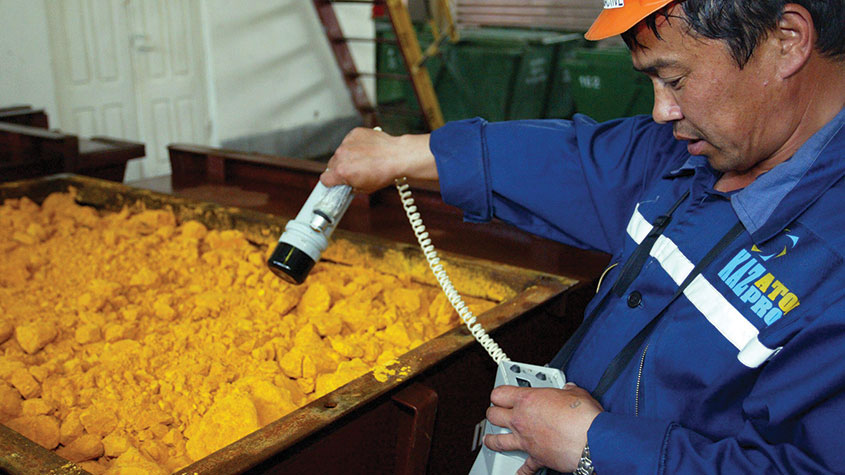Diamonds lose their shine for investors
Diamond miners are in dire straits. The $90bn market is being squeezed by demand and supply problems and faces a long-term threat from manufactured gemstones.

Diamond miners are in dire straits. The $90bn market is being squeezed by demand and supply problems and faces a long-term threat from manufactured gemstones.
Industry giant De Beers sold 12% fewer stones at its most recent sale compared to a year before, says Alexandra Wexler in The Wall Street Journal. Operating earnings at the Anglo American subsidiary fell to $518m in the first half, down 27% compared with the previous year.
A slowing global economy and US-China trade tensions have weighed on luxury demand. Tighter lending conditions in India, "where most diamonds are cut and polished", has also disrupted the supply chain.
MoneyWeek
Subscribe to MoneyWeek today and get your first six magazine issues absolutely FREE

Sign up to Money Morning
Don't miss the latest investment and personal finances news, market analysis, plus money-saving tips with our free twice-daily newsletter
Don't miss the latest investment and personal finances news, market analysis, plus money-saving tips with our free twice-daily newsletter
The "diamond midstream", the middlemen linking those who dig the stones out of the ground to those who sell them in the world's global cities, "is being squeezed like rarely before", agrees Thomas Biesheuvel on Bloomberg. The industry is so oversupplied that De Beers cut its prices for the stones by 5% across the board last month.
Mid-cap diamond-miner misery
The industry also faces a longer-term threat from the rise of lab-grown diamonds, which are chemically identical to mined stones and about 40% cheaper. They are also perceived as more ethical by some consumers because of concerns about "blood diamonds" and the environmental impact of mining. Although manufactured stones still only account for about 3% of the rough diamond market, it is a growing sector and "synthetic diamond exports from India are exploding", says Ben Davis of Liberum Capital Markets.
Mid-cap diamond miners are at a low point, but value investors should tread carefully, says Hamer. Given the inauspicious outlook further pain could be on the way. Make sure the miners "are actually recovering before buying in".
It's not all bad, notes Edward Thicknesse in City AM. While overall diamond prices are weak, a single big find can still mean a tasty, albeit unpredictable, profit. Just take Petra Diamonds, which last month "sold a 20.08 carat blue diamond" found in South Africa for $14.9m (£11.4m). It's always good to stumble upon a "diamond in a rough year".
Get the latest financial news, insights and expert analysis from our award-winning MoneyWeek team, to help you understand what really matters when it comes to your finances.
Alex is an investment writer who has been contributing to MoneyWeek since 2015. He has been the magazine’s markets editor since 2019.
Alex has a passion for demystifying the often arcane world of finance for a general readership. While financial media tends to focus compulsively on the latest trend, the best opportunities can lie forgotten elsewhere.
He is especially interested in European equities – where his fluent French helps him to cover the continent’s largest bourse – and emerging markets, where his experience living in Beijing, and conversational Chinese, prove useful.
Hailing from Leeds, he studied Philosophy, Politics and Economics at the University of Oxford. He also holds a Master of Public Health from the University of Manchester.
-
 How cancelling unused direct debits could boost your pension by £37,000
How cancelling unused direct debits could boost your pension by £37,000A new year refresh of your spending could save you money and help boost your pension pot.
-
 NS&I cuts interest rates on 8 savings accounts
NS&I cuts interest rates on 8 savings accountsNS&I will now offer less attractive interest rates for customers wishing to lock their savings away to grow for one, two, three or five years.
-
 These 2 stocks are set to soar
These 2 stocks are set to soarTips The returns from these two aluminium and tin stocks could be spectacular when the commodity cycle turns says David J Stevenson.
-
 The best ways to buy strategic metals
The best ways to buy strategic metalsTips Weaker prices for strategic metals in the alternative-energy sector are an investment opportunity, says David Stevenson. Here, he picks some of the best ways to buy in.
-
 A lesson for investors from a ill-fated silver mine
A lesson for investors from a ill-fated silver mineAnalysis Mining methods may have changed since the industry’s early days, but the business hasn’t – digging ore from the ground and selling it at a profit. The trouble is, says Dominic Frisby, the scams haven't changed either.
-
 The natural resources industry is in a tight spot – which is bad news for the rest of us
The natural resources industry is in a tight spot – which is bad news for the rest of usOpinion The natural resources industry is in a bind. We need it to produce more energy and metals, but it has been starved of investment, plagued by supply chain issues, and hobbled by red tape. That’s bad news for everyone, says Dominic Frisby.
-
 How to invest in the copper boom
How to invest in the copper boomTips The price of copper has slipped recently. But that’s temporary – the long-term outlook is very bullish, says Dominic Frisby. Here, he explains the best ways to invest in copper.
-
 Why investors should consider adding Glencore to their portfolios
Why investors should consider adding Glencore to their portfoliosTips Commodities giant Glencore is well placed to capitalise on rising commodity prices and supply chain disruption, says Rupert Hargreaves. Here’s why you should consider buying Glencore shares.
-
 How to invest in the multi-decade boom in industrial metals
How to invest in the multi-decade boom in industrial metalsTips The price of key industrial metals has already begun to rise. The renewable energy transition will take them higher, says David Stevenson. Here's how to profit.
-
 Avoid China’s stockmarket – here’s what to invest in instead
Avoid China’s stockmarket – here’s what to invest in insteadOpinion China’s stockmarket is not a good place for investors to be. But you can't just ignore the world's second-largest economy, says Dominic Frisby. Here, he picks an alternative China play.